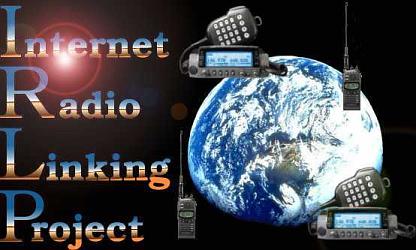The Internet Radio Linking Project, is also know as IRLP, is a project that links amateur radio stations around the world by using Voice over IP (VoIP). Each gateway consists of a dedicated computer running custom software that is connected to both a radio and the Internet. This arrangement forms what is known as an IRLP Node. Since all end users communicate using a radio as opposed to using a computer directly, IRLP has adopted the motto "Keeping the Radio in Amateur Radio".
Amateur radio (or ham) operators within range of a local node are able to use DTMFto initiate a node-to-node connection with any other available node in the world. Each node has a unique 4 digit node number in the range of 1000-8999. A real-time searchable list of all nodes worldwide (including their current status) is available anytime by viewing the IRLP Network at a Glance. As of April 2007, there are over 1,280 nodes across 7 continents.
Stations wishing to communicate with 3 or more nodes at the same time may accomplish this by connecting to what is called an IRLP Reflector. Most reflectors on the network have 10 channels (0-9) with channel 0 being the main channel. Each reflector has a unique 4 digit node number in the range of 9000-9999. The first 3 digits consist of the reflector number, while the fourth digit represents the channel number. As of April 2007, there are 20 operational reflectors (including Echo Reflector 9990, which digitally records and plays back your transmission for testing purposes). Since most reflectors have 10 channels, there are approximately 200 unique reflector channels available for use.

History
IRLP was invented by David Cameron, VE7LTD. Born and raised in
North Vancouver, British Columbia, Canada, Cameron attended the University of British Columbia where he joined the UBC Amateur Radio Society. He built his first repeater and computer-based repeater controller in the 1990s.Cameron installed the first three IRLP nodes in November of 1997. They used the
Windows operating system (OS) with VocalTec's iPhone installed. There were problems with the software, mainly in the fact that iPhone is not very stable nor is it controllable. After running iPhone for close to 6 months on active connections to Vernon, British Columbia, Canada and Saint John, New Brunswick, Canada, Cameron decided to rebuild the nodes. This is when the Linux OS and the Speak Freely software were first tested.On November 12, 1998, the VE7RHS node was first installed in Gage Towers, UBC, Vancouver, British Columbia, Canada using Linux. A few days later, the VE7RVN node came online from the residence of Michael Paul Illingby, VE7TFD in Vernon, British Columbia, Canada. Since this point, no further problems were experienced. This planted the seed for the IRLP network to grow. New nodes slowly launched across Canada, followed by the United States and worldwide.
Node numbers were originally set at 3 digits in length. Due to the extensive growth of the IRLP network, an extra digit needed to be added in 2002. Existing node numbers after this change received a trailing zero. For example, if your node number was 123, it was now 1230. Most existing reflectors were also converted from single channels to 10 channels. This new type of reflector was known as a super-reflector.